Nanaimo Airport’s Pollinator Garden Takes Off! by Lora Morandin, Ph.D, Pollinator Partnership
Next time you touch down at Nanaimo Airport (YCD) on Vancouver Island, British Columbia, Canada, don’t just keep your eyes on the baggage carousel—look around! There’s a whole buzz-worthy scene unfolding just outside the terminal, where native plants bloom, bees bustle, and biodiversity is flying high.
What was once a collection of ornamental (and non-native) plants has transformed into a vibrant, living welcome mat for native pollinators—and it’s turning heads.
From Non-Native to Nectar-Rich
In 2021, a bold idea took root: turn the airport’s decorative front garden into a haven for pollinators using native plants. Enter Pollinator Partnership, Satinflower Nurseries, and the forward-thinking team at Nanaimo Airport.
By fall, the first round of native plants was in the ground—species like red-flowering currant, woolly sunflower, nodding onion, and field chickweed—selected for their beauty and their value to native bees and other beneficial insects.
Before restoration. Photo by Lora Morandin
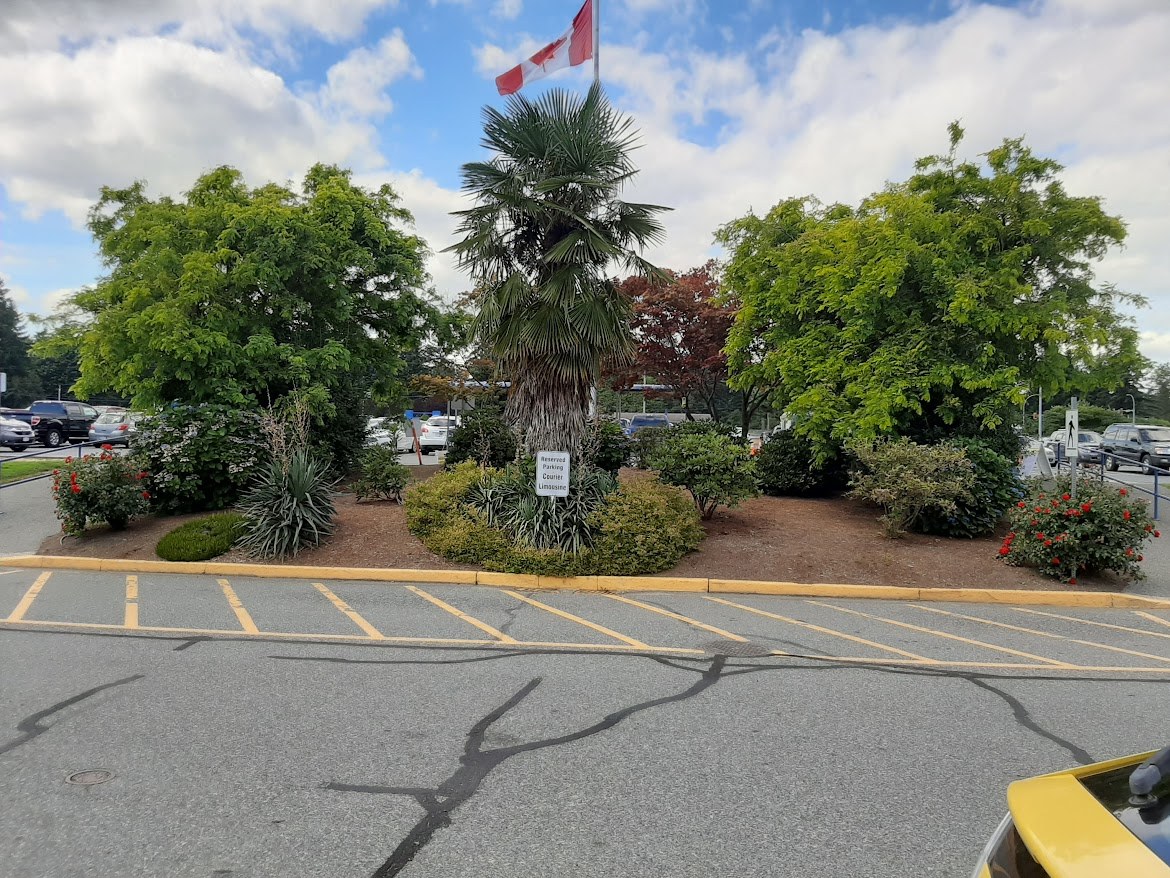
After restoration. Photo by Lora Morandin
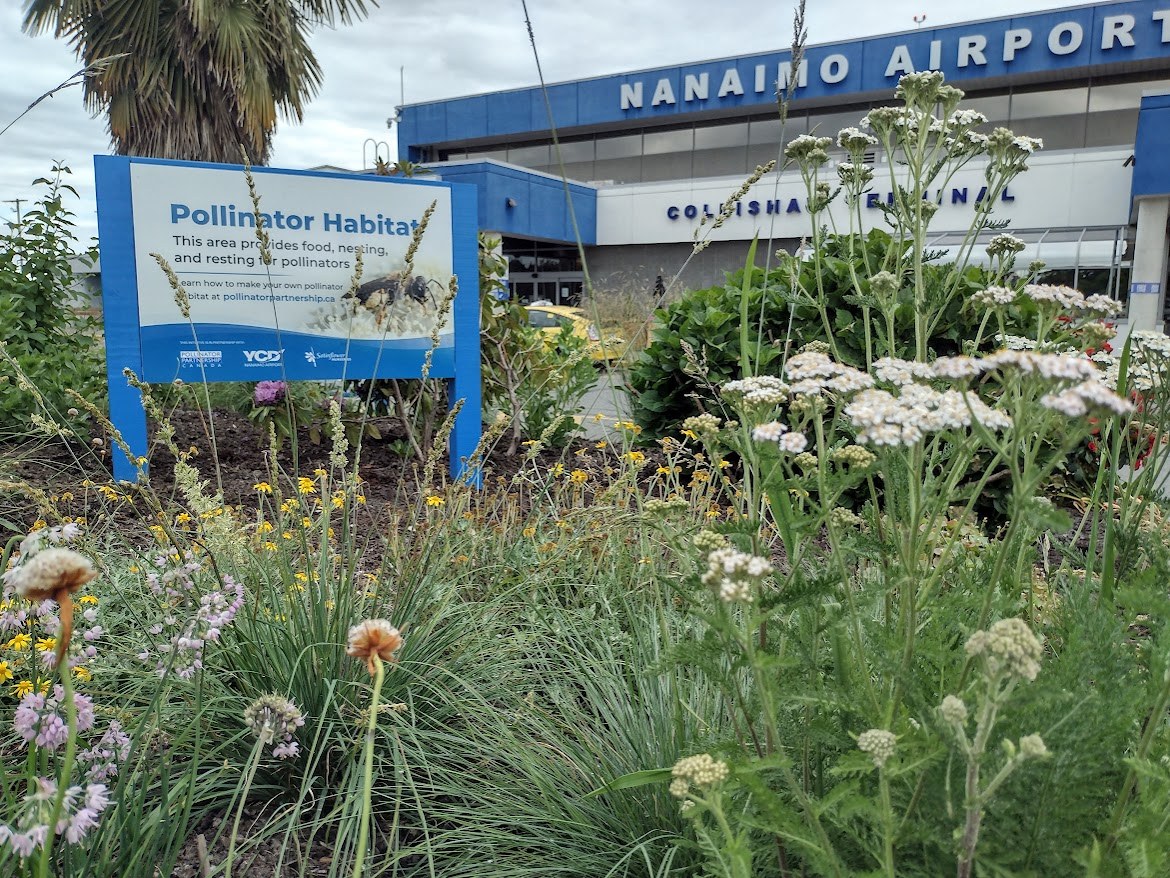
Fun fact: These plants are locally sourced and adapted to the Vancouver Island climate, which means they’re tough, drought-tolerant, and absolutely irresistible to pollinators.
Year-Over-Year Measurable Buzz: 2022 → 2023 → 2024
So, what’s drawing all the buzz? It’s the plants. With help from Satinflower Nurseries, the garden features a wide array of native plants that bloom in succession throughout the growing season. That means a steady buffet of nectar and pollen for native bees, butterflies, and other helpful insects.
But the team didn’t just plant and hope—they got scientific. With three years of monitoring now complete, the data tell an incredible story:
- 2022: 137 native bees recorded in the pollinator garden and only six bees in ornamental areas.
- 2023: 481 bees recorded—a 250% increase over the previous year.
- 2024: 564 bees observed, with more than 20 species identified and more than 50 times more bees in the pollinator garden than in nearby ornamental areas!
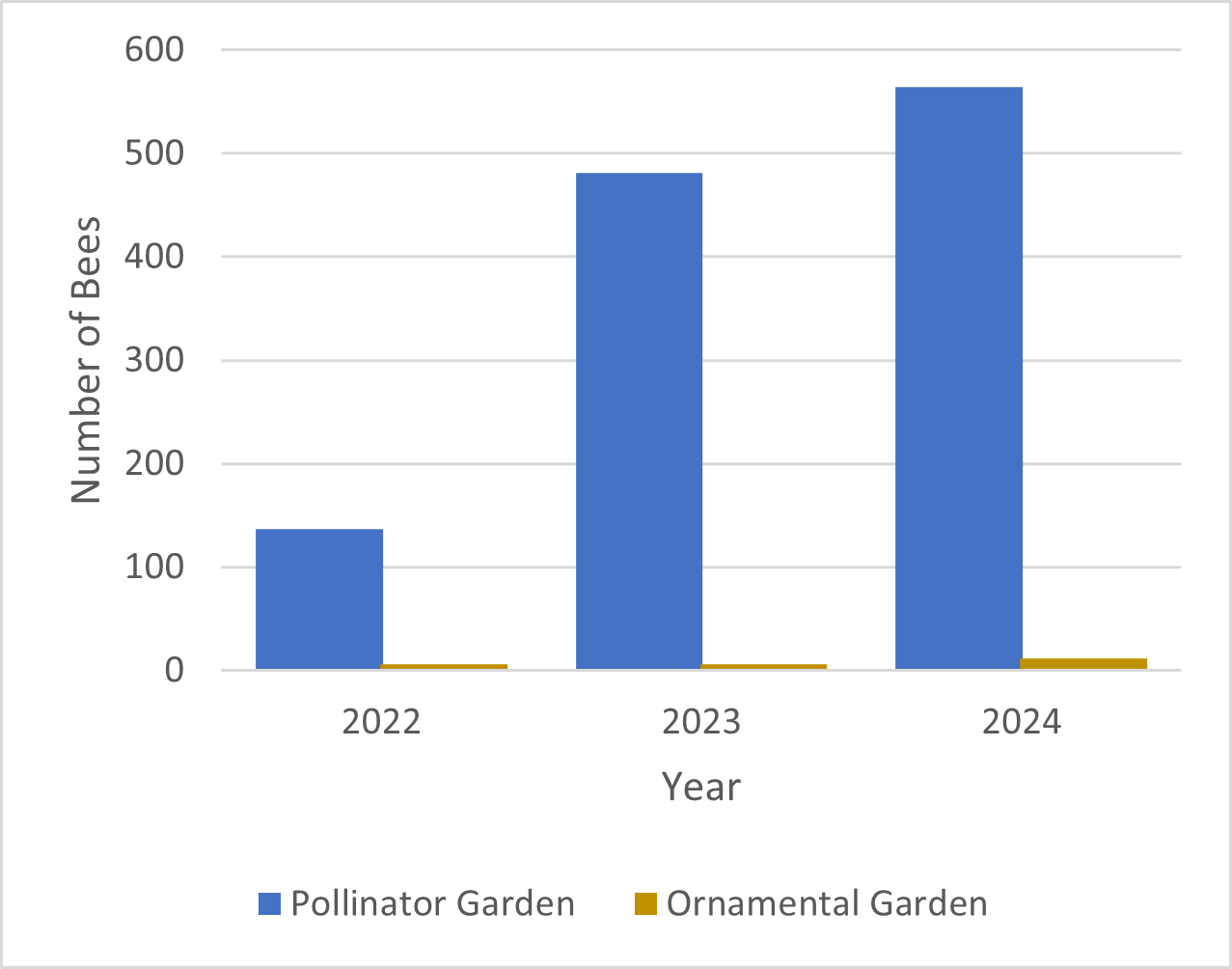
Not only did the total number of bees continue to rise each year, but species richness and diversity increased. In fact, bees from four of the five bee families found in North America were observed in the garden in 2024, including miner bees, mason bees, long-horned bees, sweat bees, and five species of bumble bees.
Photo courtesy of Satinflower Nurseries
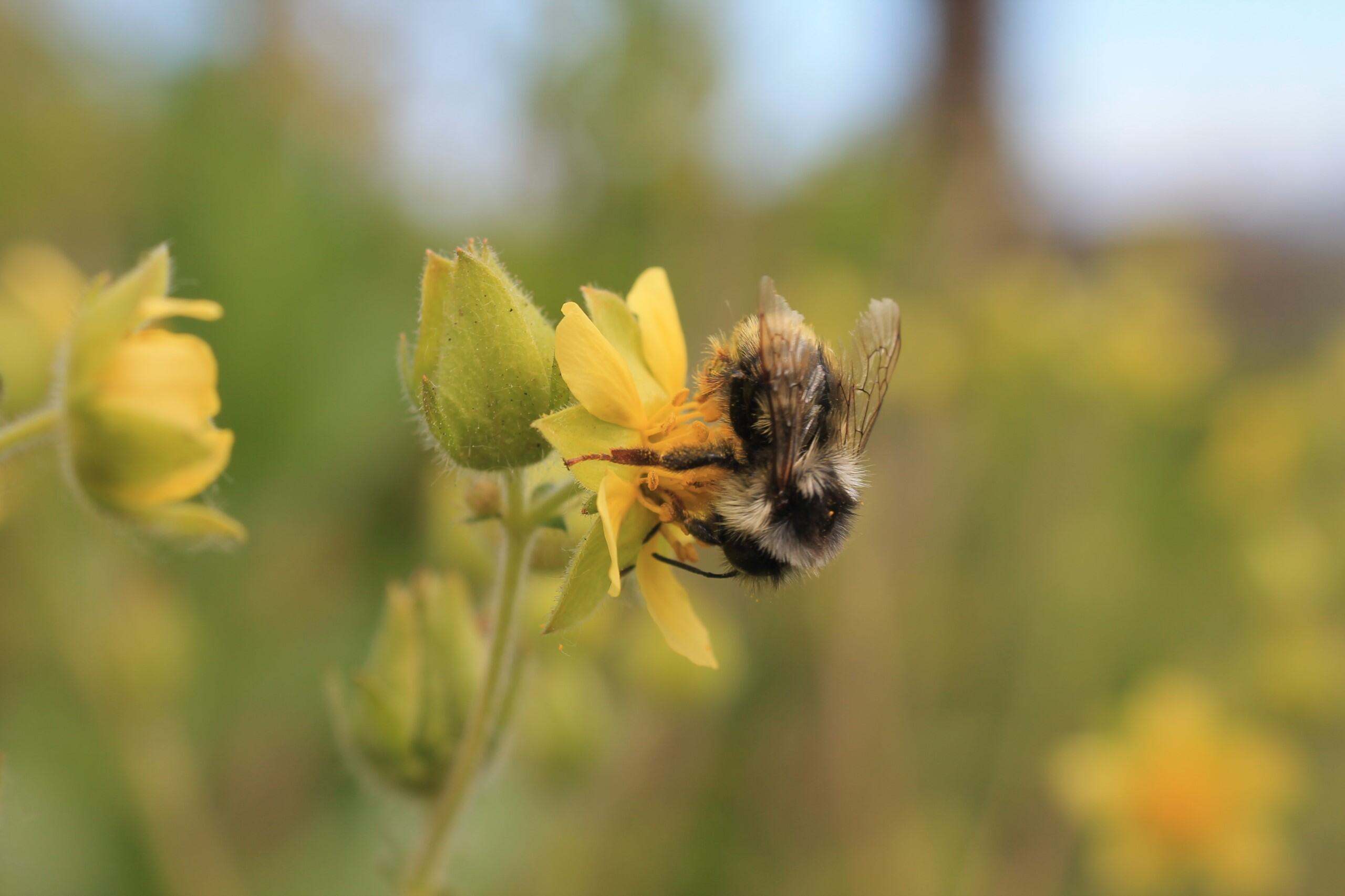
“The pollinator garden supported 4,600% more bees than the nearby landscaped areas in 2024.” – 2024 Monitoring Report
What Are the Pollinators Loving?
In 2024, Pollinator Partnership also studied floral preference—which plants the bees were most drawn to based on availability and use.
Top pollinator favorites this year included:
- Snowberry – High preference from bumble bees, thanks to its buzz-pollinated flowers.
- Nodding onion – A hit with both bumble bees and small native bees.
- Sticky cinquefoil, woolly sunflower, and small-flowered alum root – All attracted a wide variety of bees.
- Entire-leaved gumweed – A magnet for long-horned bees.
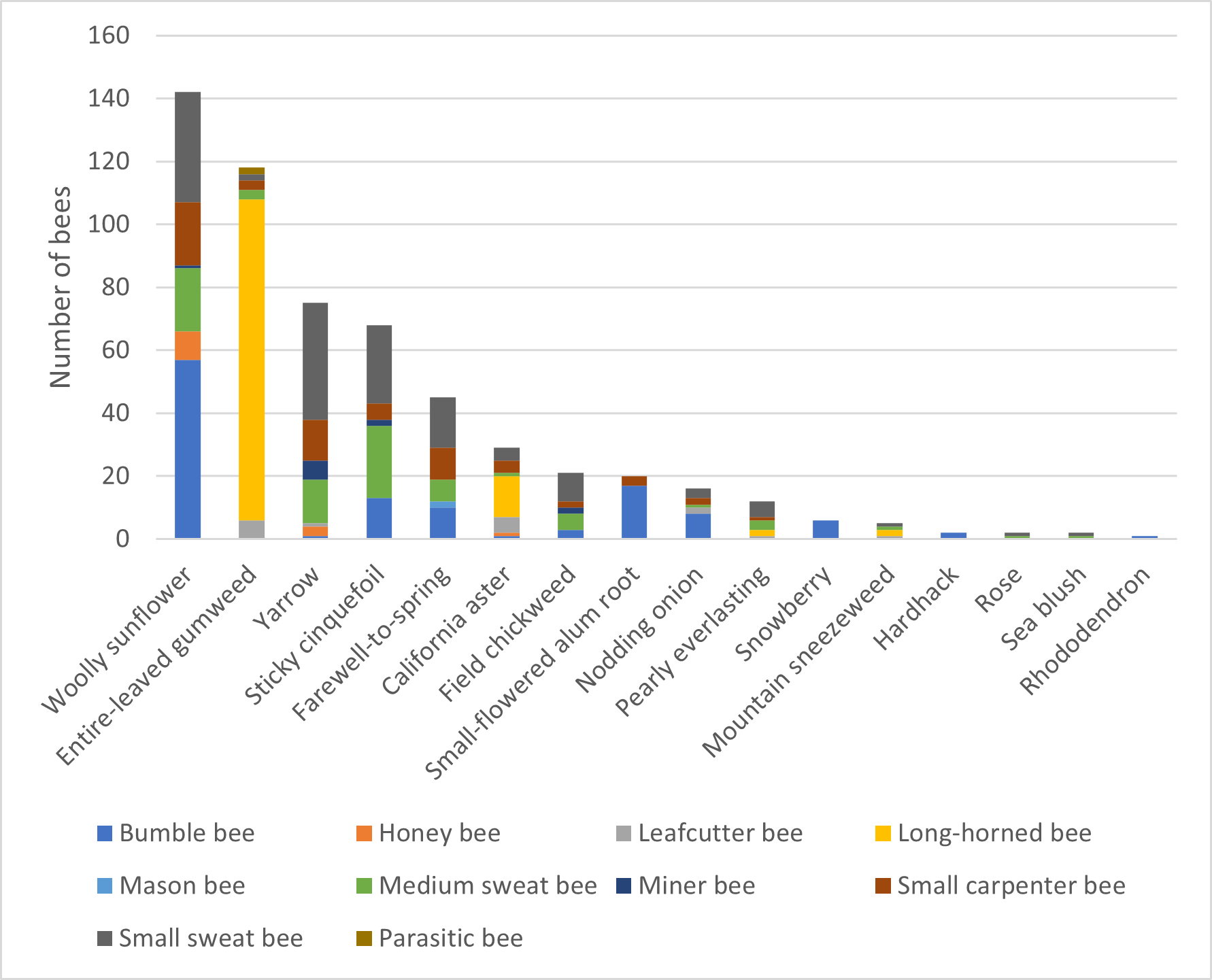
Some ornamental plants like rose and rhododendron had low bee visitation, reinforcing the power of native plants in attracting pollinators.
Built with Community, Built to Last
None of this would be possible without collaboration. Satinflower Nurseries brought their plant magic, Nanaimo Airport gave the vision wings, and Pollinator Partnership created plans and is making sure the garden supports the biodiversity it set out to protect—with real monitoring and data.
Add in community volunteers (shout-out to the planting crew!) and airport visitors who now get an up-close look at native plants and pollinators in action, and you’ve got a project that’s as rooted in people as it is in soil.
Volunteer powered planting day. Phot by Lora Morandin
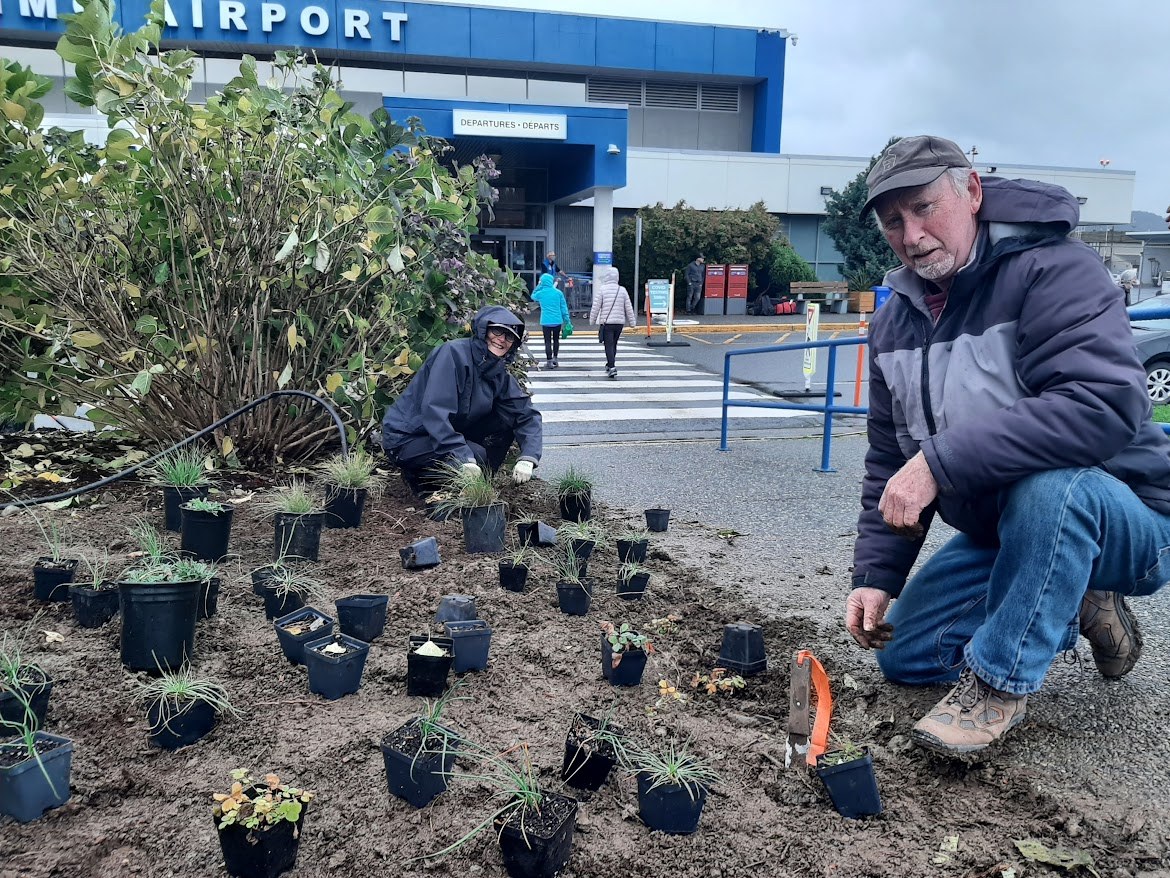
Looking Ahead
Now in its fourth year, the garden may be approaching its “carrying capacity”—that sweet spot where it supports a stable population of pollinators. Still, plant composition and bloom will continue to shift, and with thoughtful care (like weeding out invasives and managing vigorous species), this site will only get stronger as a hub for biodiversity.
There’s also a new interpretive display in the airport terminal featuring pinned pollinator specimens—a creative way to connect travelers to the natural world just beyond the terminal doors.
Interpretive display in airport terminal. Photo by Lora Morandin
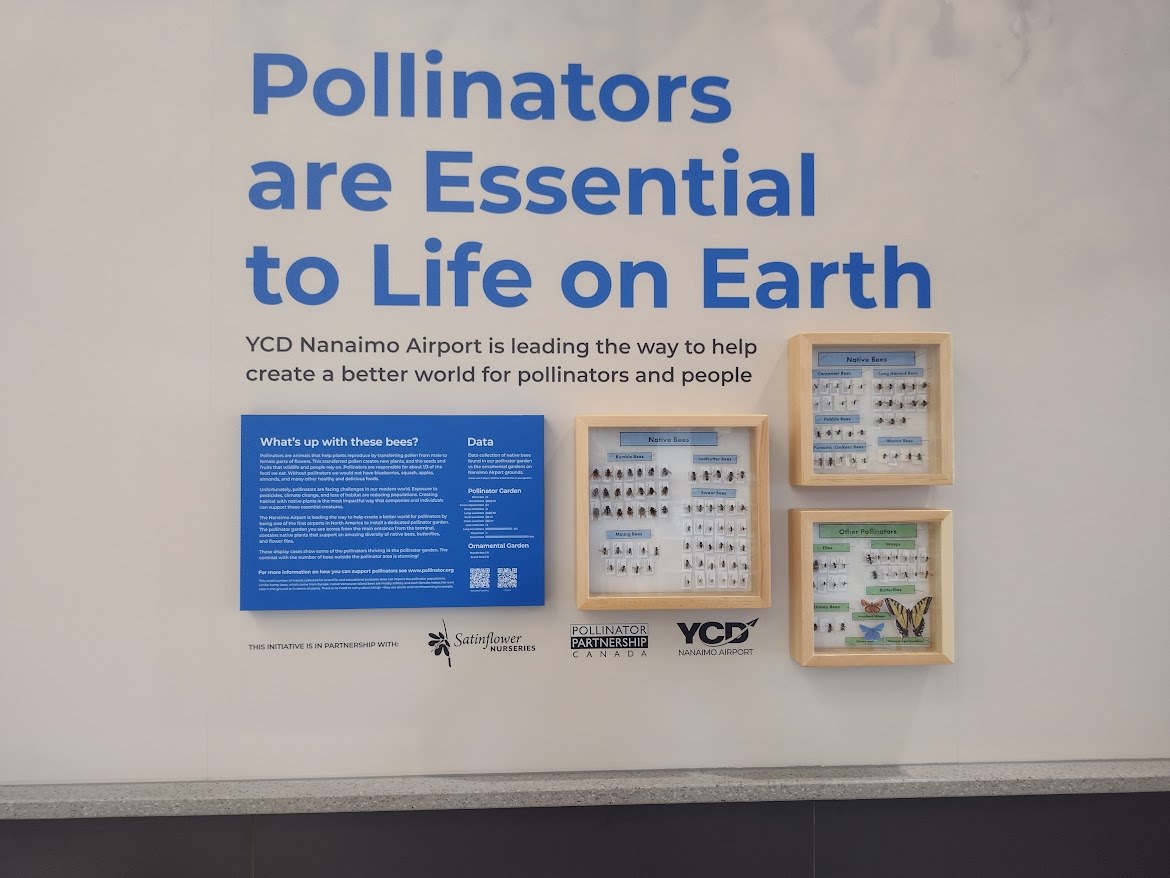
Want to Help Pollinators Take Off?
Here’s how you can support pollinators in your own backyard—or balcony!
- Plant Native: Choose plants that are native to your region. They’re the best resource for local pollinators.
- Go Pesticide-Free: Ditch the sprays—let your garden grow wild and pollinator-friendly.
- Get Involved: Volunteer with local native plant or pollinator initiatives.
For resources, planting guides, and more inspiring projects, visit Pollinator Partnership.
Photo courtesy of Nanaimo Airport
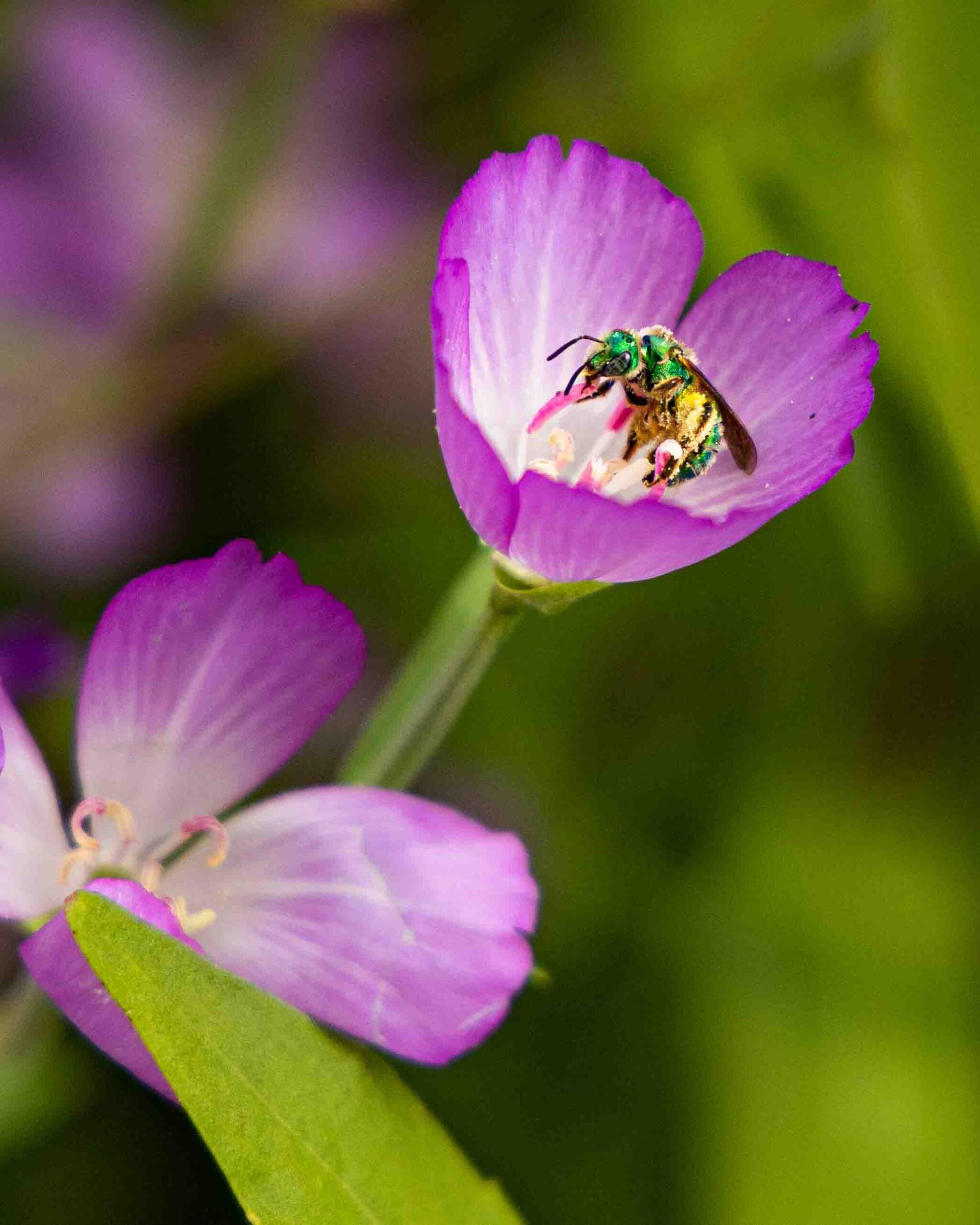
Looking to enhance sustainability at your airport or office campus? The Nanaimo Airport pollinator garden is a powerful example of how native plantings can support biodiversity, engage the public, and align with environmental goals—all in high-traffic, managed spaces. If your airport or office campus is ready to take action for pollinators, connect with Pollinator Partnership to explore how we can help bring a project like this to your site.
Worried about bee stings? No need! Most native bees are solitary, non-aggressive, and far more interested in flowers than in people. Unlike wasps or colonial bees like honey bees, they don’t defend hives and rarely sting. Learn more in the No Fear of Stings brochure.
Special thanks to Satinflower Nurseries and the Nanaimo Airport team for making this project a blooming success and to Toyota Motor North America for providing funding for plants through their Pollinator Friendly Places Initiative.